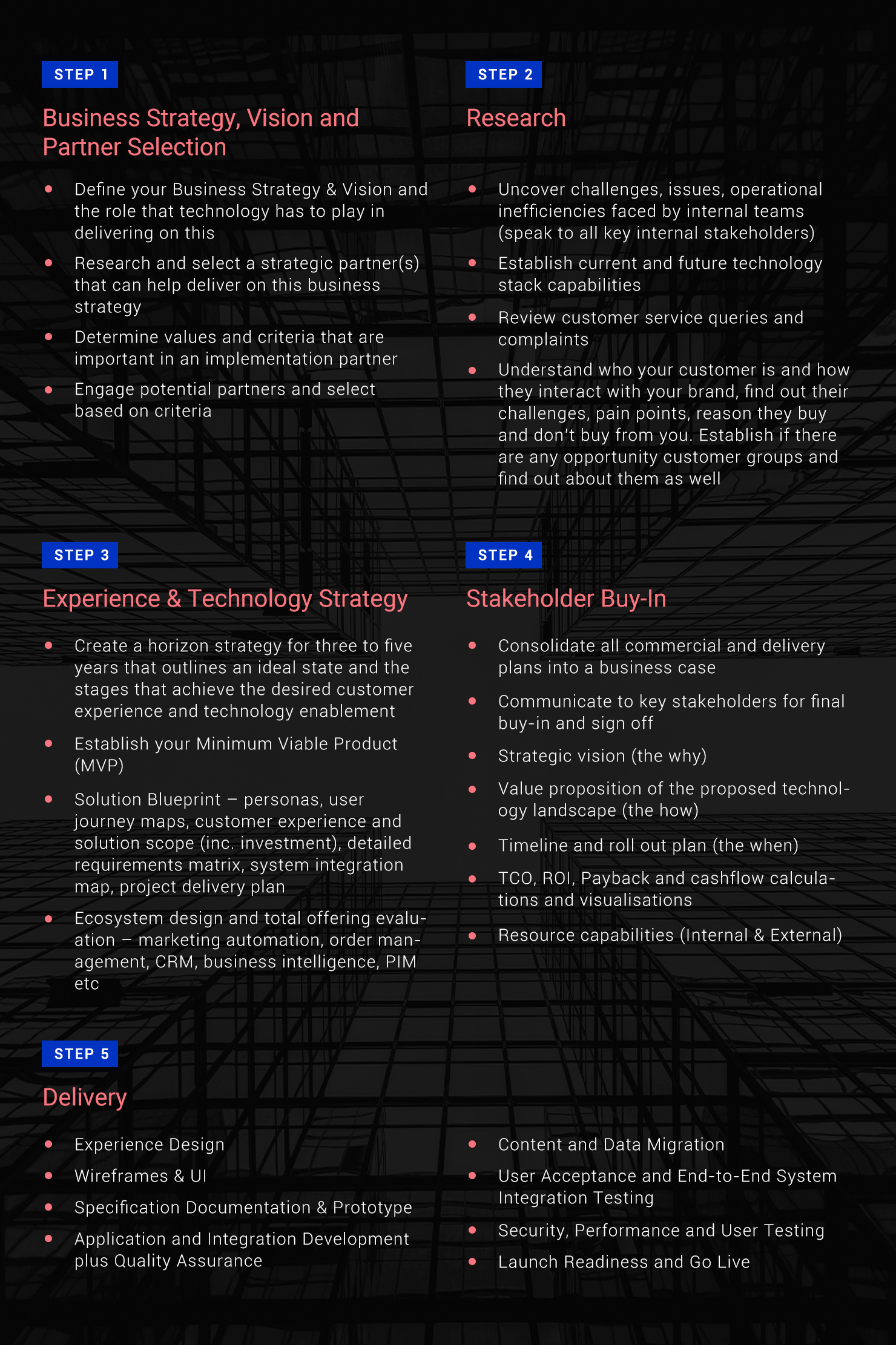Remaining relevant as the industry evolves and competition heats up is no easy task.
Brands usually turn to new trends, technologies and increased marketing spend to try and keep up but this fails to recognise how vital your point of transaction is, in the context of a changing e-commerce landscape.
Time to Transform
Undertaking a full digital transformation is a time for your business to assess the tools and innovations currently being used and predict what will continue to assist your business to scale, with your customers needs and wants in mind.
This means that you have to think about your chosen platform and its features and what will offer an unparalleled customer experience today and well into the future to account for additional features such as alternative payment methods, mobile-first designs and tools that lend itself to a global vision.
This requires that your strategy and the tools used within it has the capability to move forward with the market, ensuring it is agile and nimble whilst still being reliable enough to withstand threats.
Trends to Consider
Voice Commerce
With the rise of the Internet of Things (IoT), digital assistants have started to make their mark, with Amazon’s Alexa and Google Home becoming more commonly used in marketing strategies. Digital assistants have become one of the fastest growing segments of consumer electronic devices with study of smartphone owners across Asia Pacific revealing the impact and scale of voice technology (voice search, voice-activated AI assistants, voice-enabled application functions) in the APAC region today.
Roughly 62% of respondents had used voice-activated technology in the previous six months, with 56% of current users observing that their usage had increased over that period.
Once this kind of adoption begins, it changes the way that consumers interact and utilise their devices. In fact, a further 95% indicated their intention to continue using voice technology. Locally, the stats show that there is a 57% adoption rate of voice search in Australia.
Visual Search
22% of Gen Z shoppers say they use visual search to find items, with 53% still wanting to try it, indicating the direction that consumer behaviour is taking. This is in stark contrast to the 8% of online retailers who currently offer it.
Mobile First and PWA's
The level of Australian smartphone owners buying via mobile remains steadily high at 72% with 48% buying via mobile at least weekly (with one-in-eight consumers now mobile shopping on a daily basis). Yet there is still a significant gap between the high level mobile commerce adoption and business readiness.
Not long ago, just optimising for mobile users was seen as a competitive advantage but now mobile optimisation or even a mobile-first web design has become standard practice for doing business online.
To stay ahead or even just to keep up you need to deliver an instantaneous mobile shopping experience (think Native App type experience). This is where Progressive Web Apps (PWAs) come in. Those looking for fast and responsive user experience, offline functionality, and push notifications are launching PWAs.
Online businesses attempting to keep up with changing consumer behaviour and incorporate everything from IoT to PWAs in their strategy are being met with many hurdles and it’s no secret that legacy platforms are struggling to keep up.
2020 and Beyond
In 2019 and beyond, much of how online businesses stay ahead of the competition will come down to headless commerce.
This is why your digital strategy should have an API-Led approach, allowing for faster performance and long-term agility so you can develop PWAs or experiment with user-experience and evolve with the e-commerce landscape.
From our experience, any end to end digital transformation of this sort, demands a large replatform undertaking.
Replatforming is an necessary part of every technology stack in every vertical - from ERP to CRM to Commerce. As systems evolve, architecture is improved and new offerings are created by technology companies for brands to take advantage of.
Creating business strategies with your core technology stack in mind will help to align your customer demands with the technology you have available to you.
See our 5 step blueprint to enable digital transformation.


